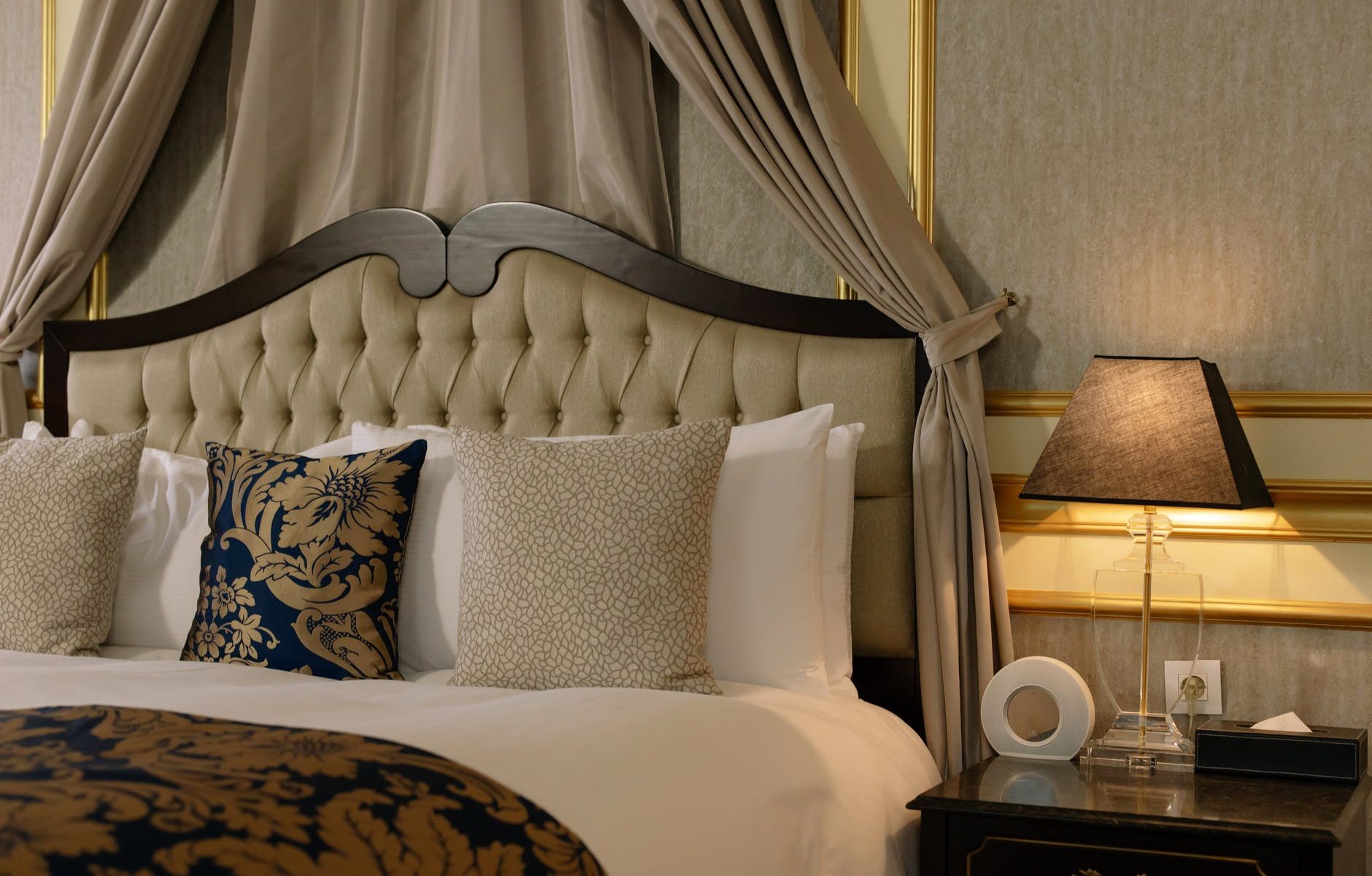There’s a dizzying array of choices out there these days, particularly since many hotel chains now have both budget and high-end accommodation line-ups.
Assuming you’re not subscribing to one of the many gig-economy accommodation offerings like Airbnb, Tripping, Home2Go, FlipKey, OneFineStay, Vrbo, Couchsurfing, Roomorama, Housetrip, Casamundo, Luxury Retreats or Wimdu (Did you know there were so many?), you are probably going to choose to use an aggregator or you might book directly with the chain.
Choosing a hotel stay can be confusing with all the choices. Do you book based exclusively on location, or do you use price and location, price, location and star rating? Do you then decide based on the reviews? What does the star rating mean anyway?
History
The hotel star rating system means different things to different hotels and different hotel groups. The more stars the greater the luxury, or so consumers might think.
In 1958, Mobil Oil and Gas began sending out anonymous paid staff to review restaurants, hotels, and spas for its guide books called Mobil Travel Guides. Although less exclusive than the Michelin Guides, a 4 or 5 Mobil star was a significant achievement for any establishment. The method of assessment is however unregulated.
The American Automobile Association and their affiliated bodies use diamonds instead of stars to express hotel and restaurant rating levels.
In the US, the hotel star rating system is based on popular opinion, in Europe, four stars equate to five stars in the US. In both cases, the rating is meant to denote the quality of the hotel. However, even across Europe, the stars don’t quite equate to the same thing at each establishment. Hotel stars are effectively meant to be a rating system that evaluates the features and amenities available at a hotel to help guests choose the best hotel for their stay and budget.
US hotels are judged by private companies and websites, whereas European hotels are evaluated by government agencies and independent organizations.
Star Ratings Australia, is owned by the Australian Tourism Industry Council with a Star Rating representing the quality and condition of guest facilities which is determined by 200 criteria according to “The truth about five-star hotel ratings”
Whether a customer is looking for a bed for the night or a more comprehensive experience, they can directly compare hotels based on their star ratings, or so the principle goes. Narrowing down the search according to the features most desired for the price.
Hotels receive a rating of 1 to 5 stars, some even higher! 1 is classed as being basic and 5 is the most elaborate in terms of amenities and service.
Per Wikipedia, “there is so far no international classification which has been adopted. There have been attempts at unifying the classification system so that it becomes an internationally recognized and a reliable standard, but they have all failed.” The World Hotel Rating (WHR) site references “A unified global rating system has been proposed by the World Hotel Project”
The ratings
Zero-Star Hotel, guests are provided little more than a bed and an outhouse according to The Manual. “On paper, it sounds more like a rural hostel. In reality, the “bedroom” is a luxury designer suite situated amid the beautiful rolling hills of Switzerland’s Appenzell region.” But this hotel’s rating is far from unique there are a number of them.
Ok so zero stars is a bit quirky and perhaps even artsy but they’re not all like that, some hotels across the globe simply don’t have any star ratings at all like these Managua hotels, most of which are hostels but some of which are just private local hotels.
A single-star hotel often provides only the bare essentials for a night’s stay. A bed and an en suite bathroom, but the latter are not guaranteed. Expect limited amenities and minimal service from the staff. The single-star rating is just an indication of basic accommodations and does not reflect cleanliness or safety. One-star hotels offer a place to lay your head for the night, but that is about it. A television or phone may or may not be available in the room. Such establishments are unlikely to have their own dining facilities or at best, they are rudimentary. The reception will also be limited in the hours that it keeps as well as housekeeping services.
A two-star hotel offers the basic necessities of a bed and bathroom in each room and may offer amenities, like a TV, phone, and wardrobe. They may have 24-hour front desk services with limited daily housekeeping and self-serve dining at the hotel, such as perhaps a continental or buffet breakfast. Such hotels may be part of a larger chain as opposed to single-star hotels that are often private. Two-star hotels are often targeted at pass-through travellers like travelling salesmen or sales reps and may also be older properties that either cannot or haven’t been renovated.
Three-star hotels often offer a balance of amenities over room rates. Mid-tier, semi-upscale hotel chains, focus on being consistent wherever you encounter them; often with a tub and shower ensuite. The lower end of the Hilton, Hyatt and Marriott hotel groups are not super luxurious but they are pretty consistent, often pass along more privileges to reward members and have upmarket fixtures and fittings in the rooms like a desk, wired and wireless internet, a TV, phone, a fitness gymnasium, perhaps even a pool and bar and some sort of dining facilities for breakfast. Targeted by the mid-tier business traveller they’re to be found in most major cities across the globe. Different classes of rooms may have queen, double queens or perhaps king beds depending on the targeted clientele.
In the US, the 4-star hotel is upscale. Providing amenities and extras to create a more pleasant multi-night stay. Often located near beaches or nightlife attractions in major cities, their reception areas are noticeably upscale with reception, valet and concierge services as well as 24-hour housekeeping, late-night room service and table dining options. A 4-star hotel may have multiple pools, health spas and racket and basketball facilities, a fitness gym and even live music playing from one or more bar and restaurant facilities.
The typical five-star hotel is one that provides what the AAA describes as “the ultimate in luxury and sophistication; extraordinary in every manner”; Forbes might consider it an “Outstanding, iconic properties with flawless service and amazing facilities“; Michelin might say it is simply “Exceptional” and Hotel.com might say “High degree of personal service; “sumptuous” lobbies; concierge service, stylish rooms, elegant intimacy“
Five-star hotels are known to be some of the most glamorous hospitality locations in the world due to the level of service they provide.
A personal butler, doorman, designated concierge, around-the-clock room service, valet parking, spa with massage services, gyms with personal trainers, live entertainment, and even child care.
Often with superior amenities like a steam room, sauna, and heated indoor and outdoor pools, they may have one or more signature restaurants and bars staffed by top chefs. The 5-star hotel often boasts attention to detail, personalized guest services and menus or special room requests. Frequently located in iconic architecturally significant buildings with state-of-the-art conference facilities and business services and extravagantly furnished rooms and lobbies, these facilities are the pinnacle of hotels that choose to be graded.
Getting personal
Hotels generate a great deal of data from the moment a guest books accommodation online to the front office check-in, to the self-service check-out. When housekeeping services the room, the guest takes room service or anything.
According to the Harvard Business Review (HBR), customer experience is the number one reason travellers use select hotels and this may outweigh the price the location and yes, even the stars!
In hospitality, harnessing customer data helps decision-makers to solve the most challenging of tasks including anticipating occupancy, competitive pricing, customer segmentation, guest loyalty and identifying the most profitable guests.
This is only possible if you have the best possible guest data and the best possible customer database and Pretectum thinks that a customer MDM is the perfect solution for that.
Before, during and after their stay, guests leave you with potentially loads of data. That data is found in different systems including the reservations system, website, property management system, point of sale, loyalty system, check-in system and even social media!
All of this guest data in aggregate can give you a clear picture of your guests and help you better understand their present and future needs, you simply need to collate the data and store it all securely in one accessible and referenceable place. Somewhere like the Pretectum CMDM.
Today that’s the number one investment priority for all serious hoteliers!
Contact us today to find out how the Pretectum CMDM can help.


